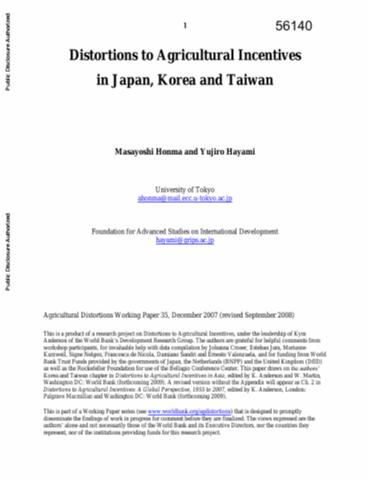Resource information
The story of agricultural policy in Northeast Asia over the past 50 years illustrates the dramatic changes that can occur in distortions to agricultural incentives faced by producers and consumers at different stages of economic development. In this study of Japan, the Republic of Korea (the southern part of the peninsula, hereafter referred to as Korea) and the island of Taiwan, China (hereafter referred to as Taiwan), the authors estimate the degree of distortions for key agricultural products as well as for the agricultural sector as a whole over a period when these economies transitioned from low- or middle- to high-income status the beginning of the so-called East Asian economic miracle of dramatic industrial development. The three economies in terms of the nature of their economies, including their resource endowments that determined the course of their modern economic growth and development. The evolution of agricultural policies in the three economies is then reviewed before discussing how to measure distortions to agricultural incentives using the methodology from Anderson et al. (2008), the focus of which is on nominal and relative rates of assistance. Implications of empirical findings for policy reforms in the three economies are discussed in the final section, where the authors also identify lessons for later-developing economies experiencing similar structural transformations in the course of their economic growth. Statistical observations are found to be consistent with the hypothesis that the success of rapid industrialization that advanced these economies to the middle-income stage resulted in declines in agriculture's comparative advantage associated with the growing income disparity between farmers and employees in non-agricultural sectors.


